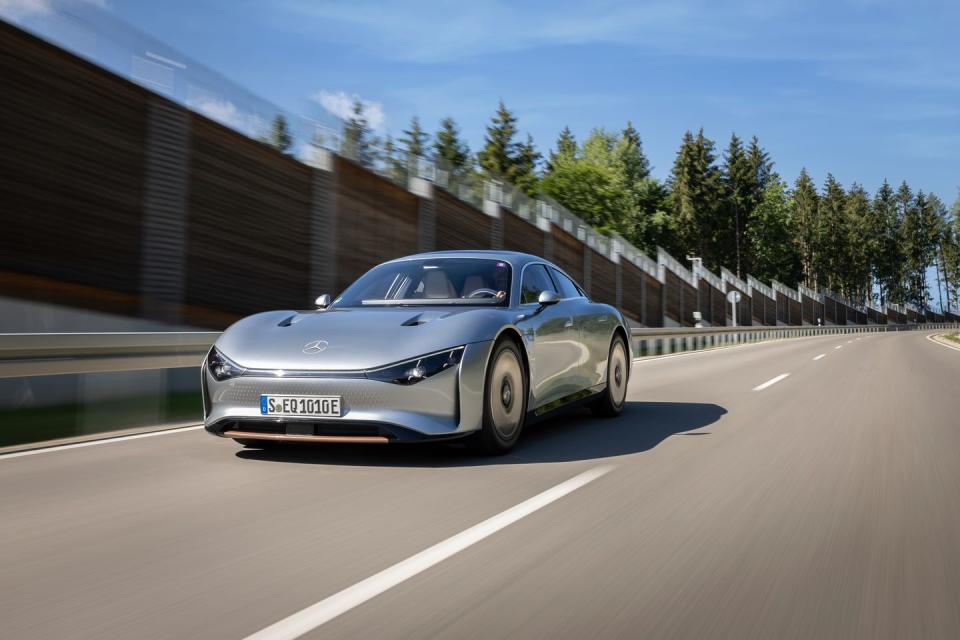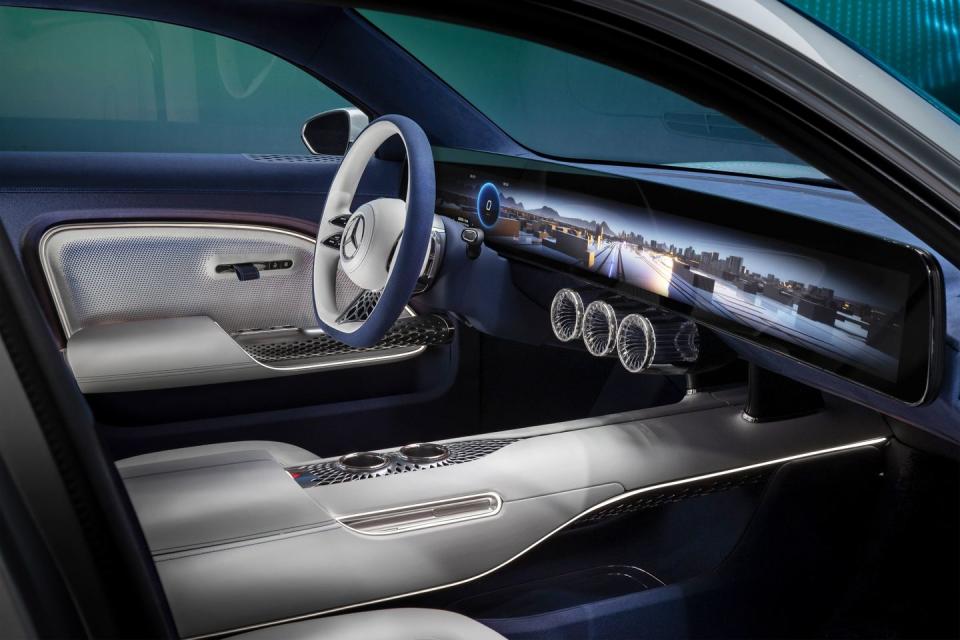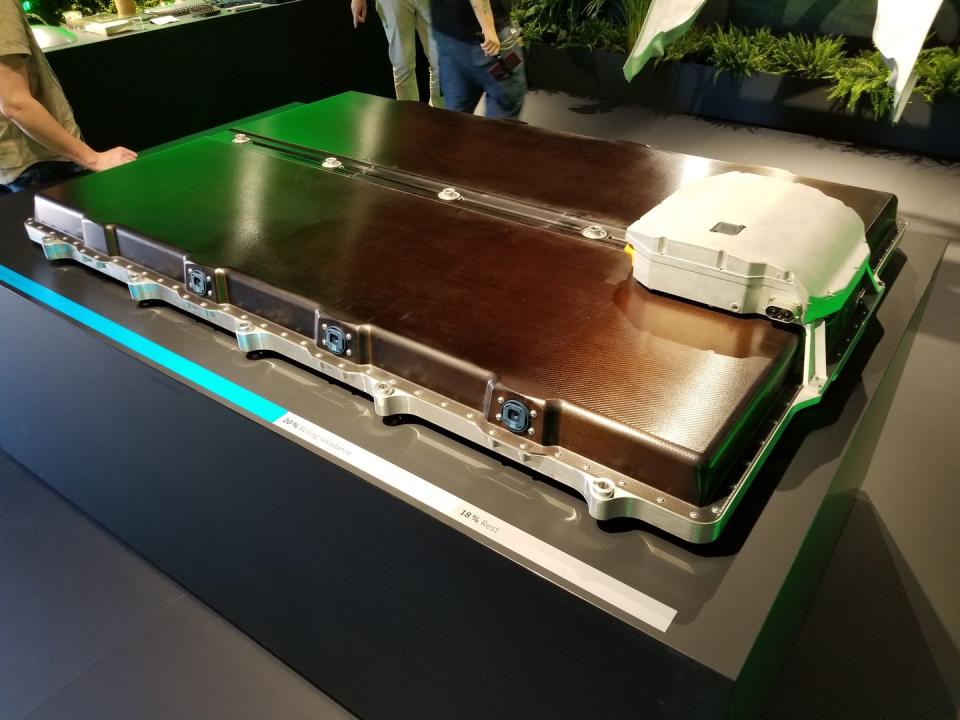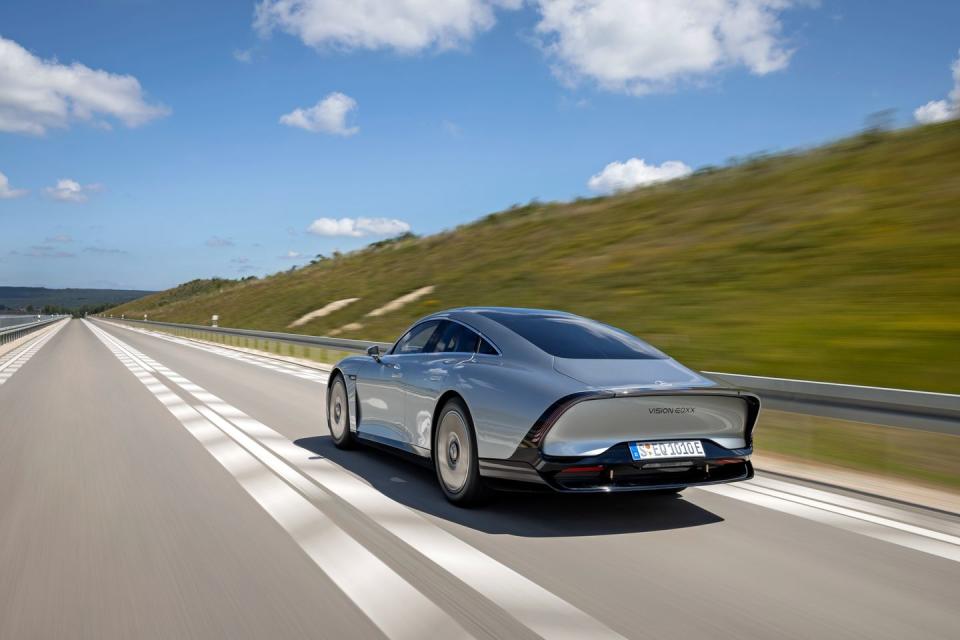Logging 747 Miles in Test Run, Mercedes EQXX Basks in EV Glory

One might consider driving the EQXX to be unremarkable, although it instills confidence when the driver sees how many miles lie ahead before recharging.
Relative to the Mercedes EQS’s 107.8-kWh battery, the pack in the EQXX is half the size and 30% lighter.
The next task for the EQXX development team—a daunting one—is to adapt its advanced technologies to series-production EVs, which means taking out loads of cost.
If cars were like professional athletes, they would be voted in to their respective halls of fame by blue-ribbon committees of designers, engineers, executives, and journalists, and there might be a required waiting period of a certain number of years after production ends for a particular vehicle to become eligible.
At Mercedes-Benz, its Vision EQXX high-mileage electric concept car is certain to be a first-ballot honoree, perhaps even earning its place at the company museum in Stuttgart purely by consensus, without even taking a vote. Museum curators probably already know which exalted place of distinction is best suited for this uber-efficient four-door with the wild interior, solar-panel roof, thin tires, and a back end curiously sloped like that of the Shelby Daytona Cobra.
It’s more aerodynamic than an American football, with a coefficient of drag of an astounding .17, aided by slender, wind-cheating side-view mirrors. Aerodynamics might be more important than you think: A typical EV today dedicates almost two-thirds of its battery capacity to cutting its way through the air ahead.
The EQXX is barely two years old, and yet it has demonstrated that EVs can be sexy, comfortable, and functional, all while delivering more than 621 miles of range on a single charge—way better than a typical internal-combustion vehicle running on a full tank of gasoline and rivaling the most efficient diesel engines, before they were sullied and banished by a scandal that started 325 miles away in Wolfsburg.

It’s the powertrain that makes the EQXX truly special, as evidenced by a brief test drive of this one-of-a-kind prototype at Mercedes’ proving grounds in Immendingen south of Stuttgart. It was designed for efficiency rather than hold-on-tight acceleration, and yet the EQXX gets up to speed quickly and can be paddled for friction-free sailing or—the opposite—one-pedal driving to regenerate the battery. This is not a slam at all, but the drive experience was completely unremarkable, moving this four-door four-seater as confidently as other EVs now in the market.
But the EQXX surely instills more confidence when the driver sees how many miles lie ahead before recharging. Who needs range anxiety?

In April, the product-development team juiced up the car’s nearly 100-kilowatt-hour battery pack and drove 626 miles from Sindelfingen near Stuttgart through the Alps to Cassis on the southern coast of France, at an average speed of 54 mph. There was no recharging along the way, and upon arrival the car still had juice to drive another 87 miles.
Emboldened by this success—and eager to get more fan love from European motorists who saw the EQXX on public roads and wanted to know everything about it—the team planned another jaunt two months later. This one started in Stuttgart and headed northwest, crossing the Chunnel into the UK and meeting up with the Mercedes-AMG Petronas Formula One team in Brackley en route to the Silverstone race track, where Formula E driver Nyck de Vries logged 11 hard laps (at a top speed of 87 mph) as the car finally ran out of electrons in the pit lane. This trip totaled 747 miles on a single charge, with an average speed of 52 mph.

For context, the Lucid Air EV now available can deliver as much as 516 miles of EPA-estimated range, or 4.6 miles per kWh of electricity—it’s one of the most efficient cars ever to see production. The Lucid Air also has a larger 112-kWh battery compared to the EQXX.
And yet on a consumption basis the EQXX beats the Lucid Air handily, driving 7.5 miles on each kWh of electricity in the June drive to the UK.

These days, any EV that consistently delivers better than 3 miles per kWh is considered efficient. The Tesla Model 3 RWD also would be in the running for the most-efficient car title—often seeing 4.5 miles per kWh. This Tesla is rated by the EPA at 132 mpg-e (1 mpg-e better than the Lucid Air) with a much smaller battery capable of 60 kWh of capacity and a range of 272 miles.

 Yahoo Autos
Yahoo Autos 